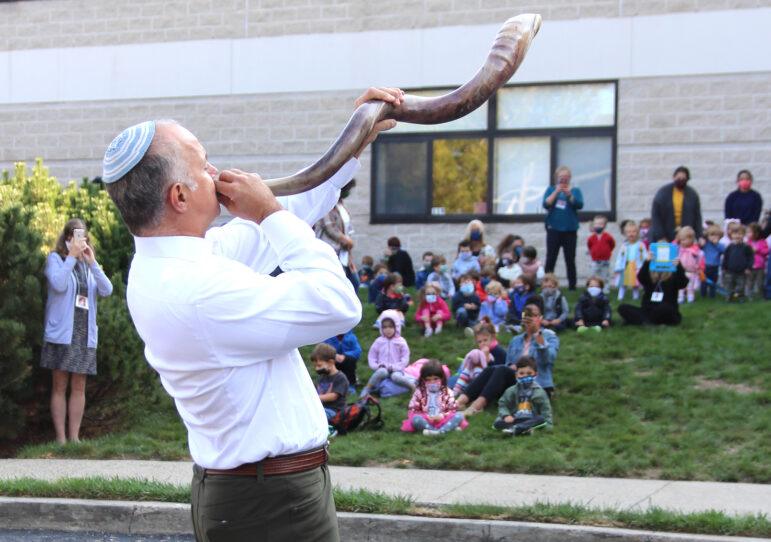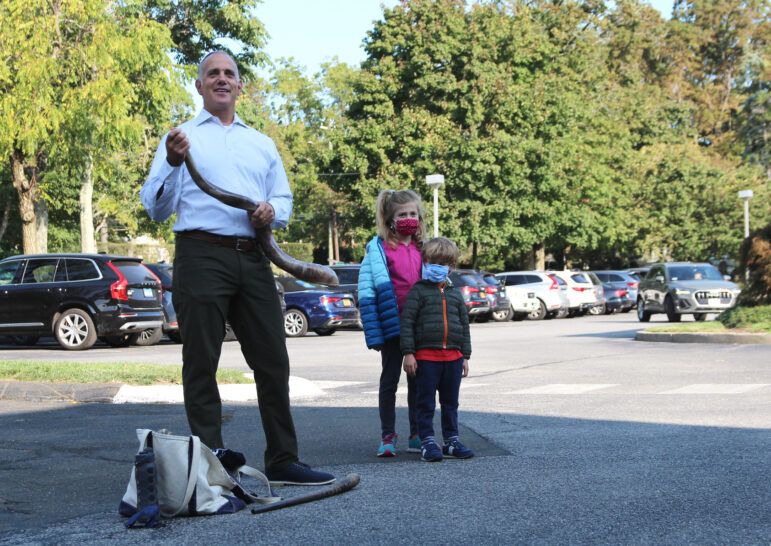On Tuesday the children at the Temple Sholom’s Selma Maisel Nursery School enjoyed an outdoor shofar demonstration courtesy of Stu Seltzer.
Seltzer typically sounds the shofar for his own synagogue in Westchester in front of 1,500 people, but he also travels to nursing homes and schools.
In fact, on Saturday, he did something truly unique. At sunrise he sounded the shofar with a group of 14 people in kayaks, while bobbing in the waves on Long Island Sound.

This year, due to Covid, synagogues are not blowing the shofar indoors. But Seltzer, who has demonstrated the shofar at Temple Sholom indoors on the stage for the past five years, noted Tuesday was a beautiful day for an outdoor demonstration.
Seltzer, whose nephew attends the preschool at Temple Sholom, said the tradition of sounding the shofar follows thousands of years of Jewish tradition. The shofar was used during coronations of kings. Another type of shofar was used to announce that war was coming.
“One of the great Rabbis from 500 years ago said the shofar was really kind of a wake up call for the Jewish people – to wake up, break their habits and make the world a better place,” Seltzer said. “That’s the tradition on Rosh Hashanah. And the final thing you hear on Yom Kippur, on Monday, after fasting all day, is the sound of the shofar – that ends the high holidays.”

Seltzer said his long horn was fashioned from an antelope horn, though the traditional shofar is made from a ram horn. “It’s got to have a curve in it,” he said.
He shared several types of notes: tekiah, which is one solid note and a wake up call; shevarim, which is three wailing sounds; and teruah, which is nine sharp sounds.
Lastly, he blew the tekiah gedolah, adding that gedolah means big.
Seltzer said the instruments are kosher, meaning an animalis not killed for their horns to become shofars. Instead, he explained the horns are taken from an animal that is already dead. “It has to be polished and hollowed out in a certain way to make them kosher,” he explained, adding that the shofar cannot be glass or plastic.
David Cohen, director of schools at Temple Sholom Synagogue, said, “We love to have the children experience and feel the holidays and have a visceral connection to it.”
“The kids have been amazing with the masks,” Cohen added, noting that just the previous day the rules had changed and three-year-olds are now required to wear masks after having been exempt. “It’s been great. We’re up to capacity with 110 children.”
“We rejiggered a few things,” he said. “It’s been wonderful.”